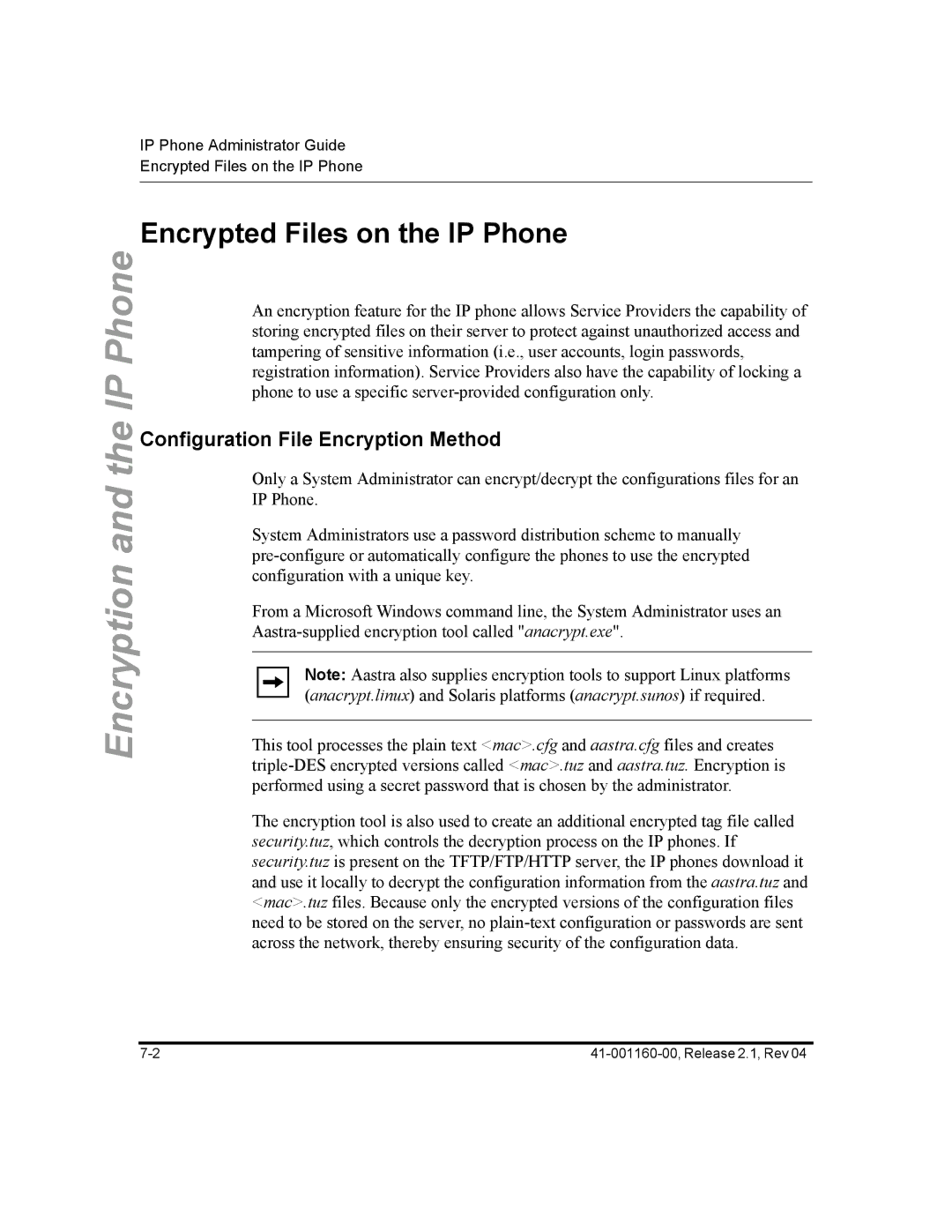
IP Phone Administrator Guide Encrypted Files on the IP Phone
Encryption and the IP Phone
Encrypted Files on the IP Phone
An encryption feature for the IP phone allows Service Providers the capability of storing encrypted files on their server to protect against unauthorized access and tampering of sensitive information (i.e., user accounts, login passwords, registration information). Service Providers also have the capability of locking a phone to use a specific
Configuration File Encryption Method
Only a System Administrator can encrypt/decrypt the configurations files for an IP Phone.
System Administrators use a password distribution scheme to manually
From a Microsoft Windows command line, the System Administrator uses an
Note: Aastra also supplies encryption tools to support Linux platforms (anacrypt.linux) and Solaris platforms (anacrypt.sunos) if required.
This tool processes the plain text <mac>.cfg and aastra.cfg files and creates
The encryption tool is also used to create an additional encrypted tag file called security.tuz, which controls the decryption process on the IP phones. If security.tuz is present on the TFTP/FTP/HTTP server, the IP phones download it and use it locally to decrypt the configuration information from the aastra.tuz and <mac>.tuz files. Because only the encrypted versions of the configuration files need to be stored on the server, no
